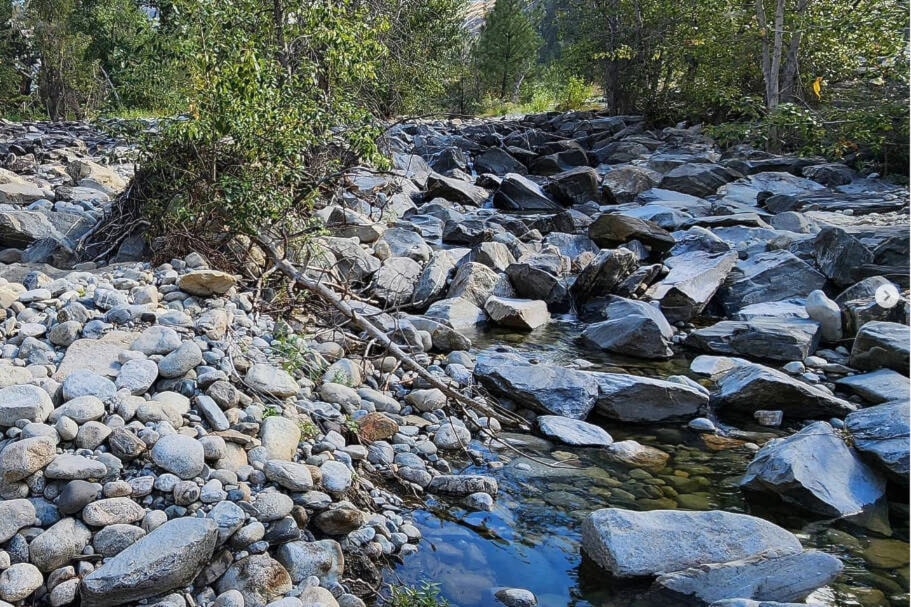Lack of rain, low streamflows, high water temperatures that can be lethal to fish and sustained warm weather have drive up the Okanagan’s drought rating.
The B.C. government has moved the region to Drought Level 5 – its highest rating (exceptionally dry where adverse impacts to socio-economic or ecosystem values are almost certain), as of Thursday, Aug. 16.
Many important fish-bearing streams in the Okanagan are flowing at historical lows and several are completely dry.
The forecast is for continued hot and dry weather in August, so it is unlikely that conditions will improve without drastic conservation measures.
Drought impacts water supply, fish, agriculture, firefighting and domestic use, and response.
“Water conservation is everyone’s responsibility,” said Corinne Jackson, Okanagan Basin Water Board communications director.
Okanagan water suppliers with upstream storage are asked to closely follow their release schedule requirements to avoid low flows downstream.
Agriculture in the region is critical. When it’s hot and dry, crops and livestock need more water to survive. But good water management is essential right now.
Residents, industry and businesses should reduce water use wherever possible and observe all watering restrictions.
“The Okanagan Basin Water Board (OBWB) is watching the fire situation in the Okanagan and beyond, and our thoughts are with all those impacted,” said Jackson.
British Columbia is experiencing severe drought levels and unprecedented drought conditions across the province. More than half of the province is in Level 5 drought, with an additional almost 30 per cent of the province in Level 4.
The drought bulletin is part of the Okanagan Basin Water Board’s Okanagan Drought Response Strategy.
The strategy is aimed at ensuring stronger communication and valley-wide coordination during a drought, recognizing that the water of the Okanagan is all connected.
“We are all part of ‘One valley. One water.’”
READ MORE: ‘Difficult days’: B.C. may be facing worst wildfire conditions of the summer
READ MORE: Taps shut on forage watering to protect salmon runs in North Okanagan
@VernonNews
newsroom@vernonmorningstar.com
Like us on Facebook and follow us on Twitter
